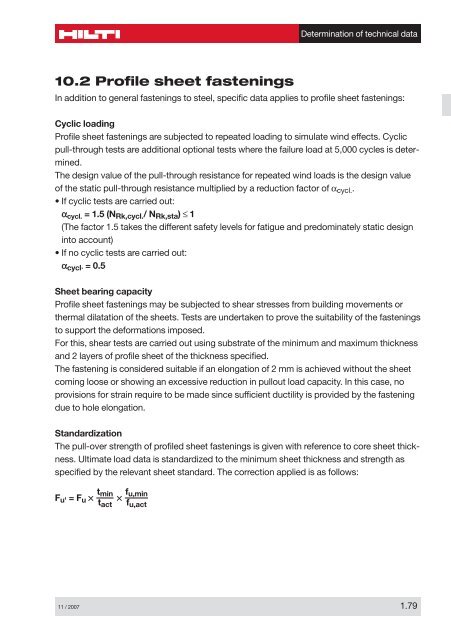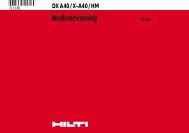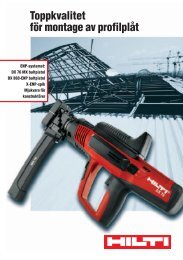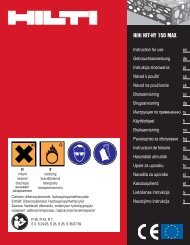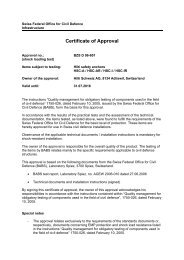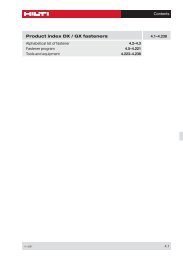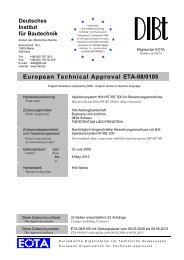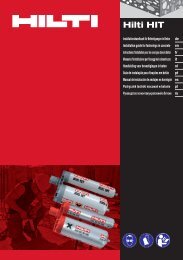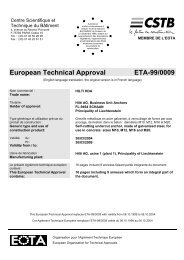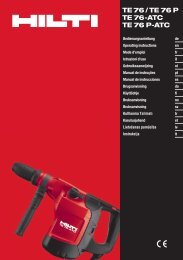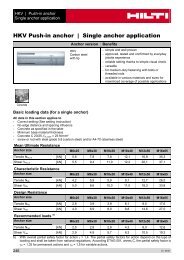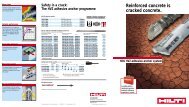00 Contents - Hilti Svenska AB
00 Contents - Hilti Svenska AB
00 Contents - Hilti Svenska AB
Create successful ePaper yourself
Turn your PDF publications into a flip-book with our unique Google optimized e-Paper software.
10.2 Profile sheet fastenings<br />
Determination of technical data<br />
In addition to general fastenings to steel, specific data applies to profile sheet fastenings:<br />
Cyclic loading<br />
Profile sheet fastenings are subjected to repeated loading to simulate wind effects. Cyclic<br />
pull-through tests are additional optional tests where the failure load at 5,<strong>00</strong>0 cycles is determined.<br />
The design value of the pull-through resistance for repeated wind loads is the design value<br />
of the static pull-through resistance multiplied by a reduction factor of αcycl..<br />
• If cyclic tests are carried out:<br />
αcycl. = 1.5 (NRk,cycl./ NRk,sta) ≤ 1<br />
(The factor 1.5 takes the different safety levels for fatigue and predominately static design<br />
into account)<br />
• If no cyclic tests are carried out:<br />
αcycl. = 0.5<br />
Sheet bearing capacity<br />
Profile sheet fastenings may be subjected to shear stresses from building movements or<br />
thermal dilatation of the sheets. Tests are undertaken to prove the suitability of the fastenings<br />
to support the deformations imposed.<br />
For this, shear tests are carried out using substrate of the minimum and maximum thickness<br />
and 2 layers of profile sheet of the thickness specified.<br />
The fastening is considered suitable if an elongation of 2 mm is achieved without the sheet<br />
coming loose or showing an excessive reduction in pullout load capacity. In this case, no<br />
provisions for strain require to be made since sufficient ductility is provided by the fastening<br />
due to hole elongation.<br />
Standardization<br />
The pull-over strength of profiled sheet fastenings is given with reference to core sheet thickness.<br />
Ultimate load data is standardized to the minimum sheet thickness and strength as<br />
specified by the relevant sheet standard. The correction applied is as follows:<br />
Fu' = Fu × × fu,min<br />
tmin<br />
tact<br />
fu,act<br />
11 / 2<strong>00</strong>7 1.79


